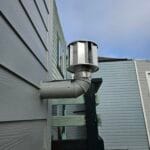Choosing the right transmission for your lawn tractor can feel like a daunting task. You’re faced with the decision between hydrostatic and manual options, each with its own set of advantages and drawbacks.
Imagine cutting your lawn effortlessly with a machine that feels like an extension of your hands, or perhaps you prefer the satisfaction of manually controlling every move. Understanding these transmission types is key to transforming your mowing routine from a chore into a pleasure.
We’ll dive into the details of hydrostatic versus manual transmission, breaking down what they mean for you and your lawn care experience. Stick around, because by the end, you’ll know exactly which option will make your lawn the envy of the neighborhood.

Credit: agriculture.papemachinery.com
Transmission Basics
Choosing between hydrostatic and manual transmission impacts lawn tractor performance. Hydrostatic systems offer smooth acceleration and easy speed adjustments. Manual transmissions provide precise control and are often more durable.
When it comes to choosing a lawn tractor, understanding the basics of its transmission is crucial. The transmission dictates how power from the engine is delivered to the wheels, affecting the tractor’s performance and ease of use. Whether you’re mowing a flat lawn or tackling hilly terrain, the right transmission can make all the difference in your gardening experience.Understanding Lawn Tractor Transmissions
Lawn tractor transmissions are the backbone of your mowing machine. They handle how power gets from the engine to the wheels, controlling speed and direction. Familiarizing yourself with transmission types helps you pick the best one for your needs. Have you ever noticed how smoothly some tractors glide across your lawn, while others seem to struggle? That’s often down to the transmission. A well-suited transmission can enhance your mowing efficiency and comfort.Types Of Lawn Tractor Transmissions
Lawn tractors generally come with two primary types of transmissions: hydrostatic and manual. Each has its own unique features and benefits. Hydrostatic transmissions use fluid to transfer power. They’re known for their smooth operation and ease of use. You can adjust your speed seamlessly, much like driving an automatic car. This makes them ideal if you prefer less manual work and more focus on mowing. Manual transmissions, on the other hand, require you to change gears manually. They’re generally more affordable and can be more reliable in the long term. If you’re comfortable with manual gear changes, this type might offer a more engaging mowing experience. Consider your personal comfort and lawn type when deciding. Do you want more control or more convenience? Each transmission type offers a different mowing experience, so think about what’s most important to you.
Credit: au.mowrator.com
Hydrostatic Transmission
Hydrostatic transmission is a popular choice for lawn tractors. It offers smooth operation and requires less maintenance. Unlike manual transmission, it uses fluid dynamics for power transfer. This allows for seamless speed control and direction change. Many lawn tractor enthusiasts prefer hydrostatic systems for their ease of use.
How Hydrostatic Transmission Works
Hydrostatic transmission relies on fluid pressure. It uses a hydraulic pump and motor. The pump sends fluid to the motor. This fluid pressure powers the tractor wheels. Speed adjustments are made by changing the fluid flow. This system provides infinite speed variability. It allows for precise control of the tractor.
Advantages Of Hydrostatic Transmission
Hydrostatic transmission offers several benefits. It provides smooth acceleration and deceleration. Gear shifting is not needed. This makes operation simpler. It allows for easier maneuvering in tight spaces. The system is durable and requires less maintenance. Many users appreciate its reliability and ease of use.
Disadvantages Of Hydrostatic Transmission
There are some drawbacks to hydrostatic transmission. It can be more costly than manual systems. Fluid leaks may occur, causing problems. Repair costs can be high. Efficiency may be lower at higher speeds. Some users find fuel consumption higher. Understanding these downsides is important for making informed choices.
Manual Transmission
Manual transmission in lawn tractors is a traditional choice. It offers a direct connection between the engine and wheels. This transmission type requires the operator to manually shift gears. It’s favored by users who enjoy a more hands-on approach.
How Manual Transmission Works
Manual transmission uses a clutch and gear system. The operator presses a pedal to engage the clutch. This action disconnects the engine from the wheels. Then, the operator shifts gears using a lever. Releasing the pedal reconnects the engine and wheels. This process allows control over speed and power.
Advantages Of Manual Transmission
Manual transmission offers precise speed control. Users can select the exact gear for their needs. It provides a strong mechanical connection. This can lead to better fuel efficiency. Maintenance and repairs are often simpler and less costly. Some users prefer the interactive experience it offers.
Disadvantages Of Manual Transmission
Manual transmission requires more effort from the operator. It can be tiring over long periods. Shifting gears while mowing can be complex. This might not suit beginners. It may also lead to inconsistent speed. This can affect the quality of the cut. Overall, it demands more skill and focus.
Performance Comparison
Lawn tractors come with different transmission types. Hydrostatic and manual transmissions are popular choices. Each type offers unique benefits and challenges. Understanding their performance helps in making an informed decision.
Efficiency And Speed
Hydrostatic transmissions offer smooth and efficient operation. They adjust speed easily. No need to change gears manually. This allows for precise control. Ideal for varying terrain and tight turns.
Manual transmissions require gear shifting. This can affect speed consistency. They offer more control over power distribution. Suitable for larger lawns and open spaces.
Maintenance And Longevity
Hydrostatic systems require regular fluid checks. They can be complex to repair. Proper maintenance ensures a long lifespan. Manual transmissions need less frequent maintenance. They are easier to fix if issues arise.
Both types need routine checks. Ensuring parts are in good condition extends their life. Choose based on your willingness for maintenance.
Cost Considerations
Hydrostatic transmissions often cost more upfront. Their advanced technology demands a higher price. Manuals are typically cheaper. They are less complex, resulting in lower initial costs.
Consider long-term costs as well. Hydrostatic systems may need more repairs. Manuals can be more cost-effective over time. Weigh initial and ongoing expenses to decide what fits your budget.
Choosing The Right Transmission
Choosing the right transmission for your lawn tractor is essential. It affects performance and maintenance needs. Two main types are popular: hydrostatic and manual. Each has its benefits and drawbacks. Understanding these can help you make an informed decision. Let’s explore key factors that can guide your choice.
Assessing Your Lawn Needs
Consider your lawn’s size and terrain. Hydrostatic transmissions suit larger lawns. They offer smooth speed changes. Slopes and varied terrains benefit from this. Manual transmissions work well on flat, small lawns. They provide control and efficiency. Think about your lawn’s characteristics.
Budget And Usage Frequency
Cost is an important factor. Hydrostatic transmissions usually cost more. They offer convenience and ease of use. Manual transmissions are budget-friendly. They are ideal for those who mow infrequently. Determine how often you’ll use your tractor. Align your choice with your budget.
Future Maintenance
Maintenance is crucial for a lawn tractor’s longevity. Hydrostatic transmissions need regular fluid checks. They may require more attention over time. Manual transmissions are simpler. They are easier to maintain. Consider your willingness to perform maintenance tasks.

Credit: www.kenotractors.com
Expert Tips
Choosing between hydrostatic and manual transmission for your lawn tractor can be challenging. Understanding the key differences helps in making an informed decision. This section offers expert tips to help both beginners and seasoned users. Learn how to maintain your lawn tractor effectively.
Tips For Beginners
Start with understanding basic controls. Practice driving in an open area. Get comfortable with speed adjustments. For manual transmission, learn to shift gears smoothly. Hydrostatic transmissions are easier for beginners. They offer smooth speed transitions. Always read the user manual for specific instructions.
Best Practices For Maintenance
Regular maintenance extends the life of your lawn tractor. Check oil levels frequently. Replace it as needed. Clean the air filter regularly. This prevents engine damage. Inspect belts for wear and tear. Replace them if necessary. Keep the tires properly inflated. Lubricate moving parts to reduce friction. Follow the manufacturer’s maintenance schedule.
Frequently Asked Questions
What Is Hydrostatic Transmission In Lawn Tractors?
Hydrostatic transmission uses fluid to transfer power. Offers smooth operation. Ideal for varying speeds and directions.
How Does Manual Transmission Work In Lawn Tractors?
Manual transmission uses gears for power transfer. Requires clutch operation. Good for consistent speed and power.
Which Transmission Is Better For Hills?
Hydrostatic transmission is better for hills. Provides smoother control. Easier to maneuver on slopes.
Is Hydrostatic Transmission Maintenance Difficult?
Hydrostatic transmission maintenance is straightforward. Regular fluid checks needed. Less wear compared to manual.
Do Manual Transmissions Last Longer?
Manual transmissions often last longer. Fewer parts involved. Regular maintenance helps extend lifespan.
Conclusion
Choosing between hydrostatic and manual transmissions depends on your needs. Hydrostatic transmissions offer smooth operation and easy control. Manual transmissions provide more power and are often cheaper. Consider your lawn size and terrain type before deciding. Think about maintenance and your comfort level with each system.
Each type has its pros and cons. Assess them carefully to match your preference and budget. Ensure the choice enhances your mowing experience. Happy mowing!





